Frank Hale was born in Cavendish in 1912. In 1978, he described his memories of old Cavendish to his granddaughter Sarah. Frank ran the Butchers' shop in the village
A photographic gallery of the postcards of Cavendish that were used to illustrate Frank Hales's recollections is here, along with several more
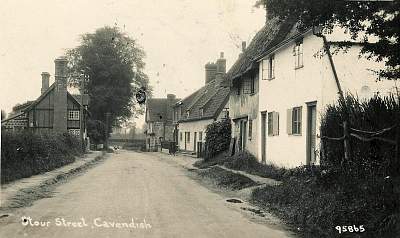
We are starting at the Clare end of Cavendish, walking down into the village, right down the street as far as the village goes, and then back up the other side.
When I was a little boy the furthest house that did any business was the "Fir Trees"
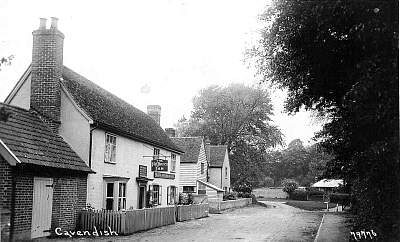
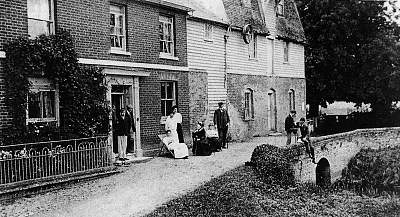
Walking into the village and turning down the lane we went over the Railway crossing where the trains went over the road, and so on down to Cavendish village mill.
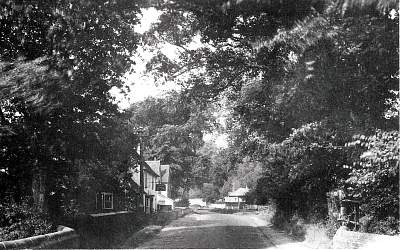
Back on the main road we pass several houses where 3 or 4 families lived, they've now been turned into one separate house. There's a big gap from what we used to call "Workhouse Street", up into the main village. The first real village activity was the first cottage on the right where Mrs. Maxim used to live, and there she had a Laundry; she used to take in a lot of washing for women, for different houses, several women worked there.
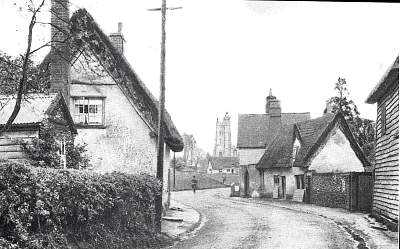
A little further on there was Mr. Rice's shop, a painter's. He used to mix his own-paints, I've been there when he had a machine, and you put the stuff in and turned the handle, and the paint came out of the other end.
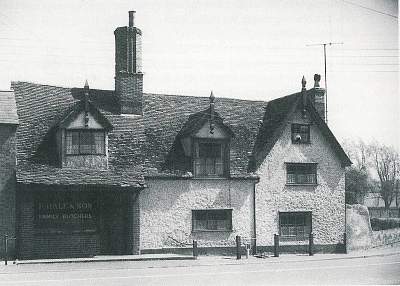
From there we come to the house where I was born, the Butcher's shop, with the slaughterhouse at the back. Then to one side of us we had a Shoe-repairers and also opposite we had another shoe-repairer.
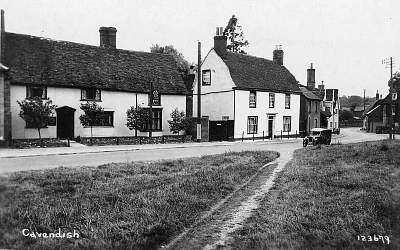
About 2 doors along where it is now (1978) the "Grapevine" used to be a Private School. run by Miss Clarke. Next door was Mr. Boltrope, he had a Blacksmith's Shop, they used to shoe the horses there and they also had a general shop where they sold spades, forks, mole-traps, wire netting, lawn-mowers etc.

Two doors on was the Men's Institute, where as a young man I used to go. We played draughts, dominoes, billiards, and read papers. there were weekly magazines there, and that was also where the village paper was sold. Next door was a little general stores where Mr. Newman lived, that's where I got most of my sweets when I was a little boy. I used to go in when he was having his dinner, & the old man would be munching - and they used to put the sweets in paper bags in those days; and he used to blow the bag open - and you had half his dinner in with your sweets, as all the crumbs blew off his mouth.
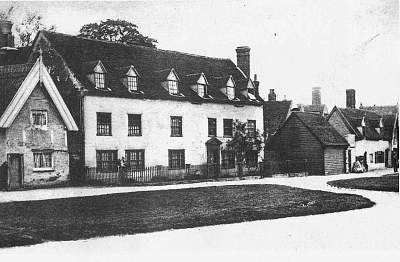
Next door to him was the Grammar School; it wasn't open in my days, my uncle and father both went there.
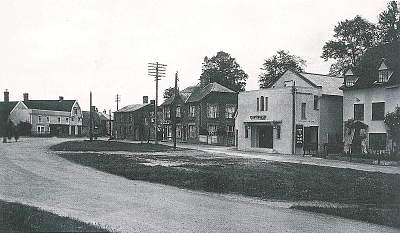
Two doors further on was another Bakers', Mr Pettit, he used to deliver his bread with a horse & cart, and he had a huge hood that went right over the top of the cart like a pram has, and a lot of us boys when he went by the Green, used to all hang on the back of the cart, and we could stop the pony. The old man used to get his whip and try to hit us, but when he'd got his hood up he couldn't see us. Next door to him was a currier.(a place where they supply leather), he used to supply leather to local shoe-repairers. Then there was the village Pond.
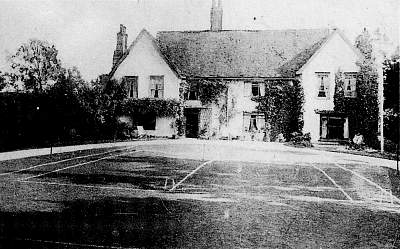
Then there was a big house known as the Old Rectory, now the Sue Ryder home. Down the village further on the right where they've built the bungalows there used to be big stacks of faggots. Mr. Garrett used to buy these faggots off the farmers & they made huge stacks with them & took them across to the Malting to make fuel for the fire.
A little further down was where Mr. Underwood lived; he used to make shoes. Next door to him was the Wheelwright; they used to mend wheels for waggons & carts. Nest door was a big row of houses built by Mr. Garrett, and the first one was where the policeman lived.
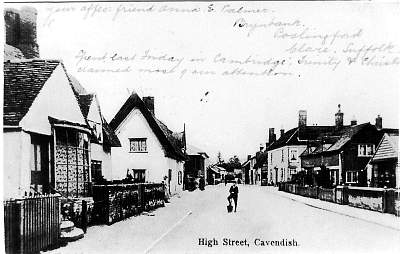
Further down was where Mr Ives lived, another painter. The next house, now called "Full of Beans", was another Private School, Miss Garrett kept that, 10 or 15 children: went there, they used to come from other villages in horses & traps every morning & someone would come for them in the afternoon, the lessons were in the morning.
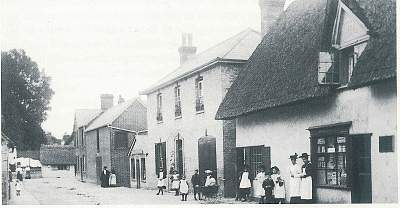
Further down the street was another shoemaker. next door to him was a Blacksmith. Mr. Rushbrooke "Old John" we used to call him, a big, strong man.
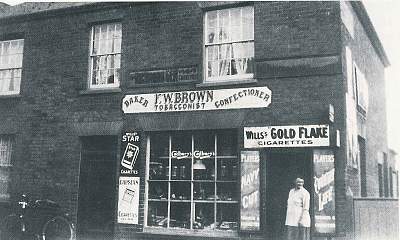
Next door was another bake house where they made bread & also sold sweets.
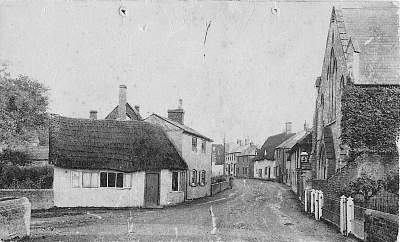
Twenty yards further was the Chapel, In my young days that was very strong, very often it was difficult to get a seat. Next door was the Maltings. also belonging to Mr. Garrett, but they weren't used much, they were. eventually pulled down & two houses built there. Further on on the same side was a Thatcher.
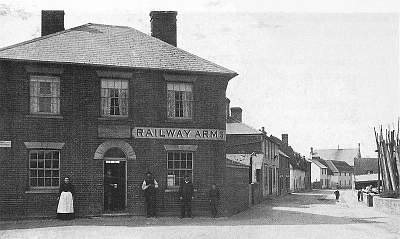
Then we come to the Railway Arms & the station -
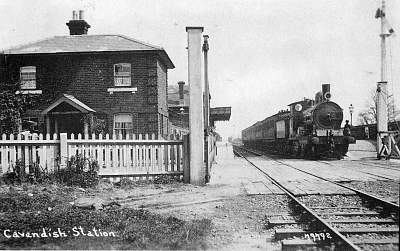
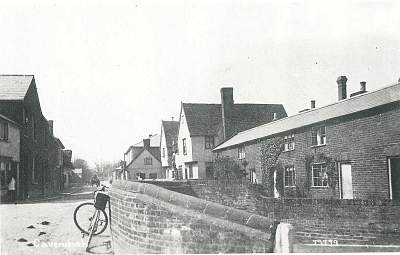
On the corner of Water Lane lived my aunt, she used to sell a little meat which we sent down from the shop.
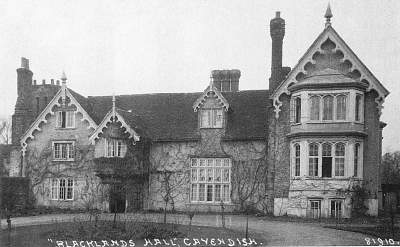
Down Water Lane at Blacklands Farm was where we had to go to see the Doctor. Nobody had a car in those days & it was a long walk for people to go to see the doctor. You had to it in a tiny waiting room, a little cold place, just a shelter over 2 walls.
Back in the village, nearly opposite the old Blacksmith's shop was a yard. In my young days there was a factory there where they used to make matting, they were quite busy, 4 or 5 women worked there.
A little further up was Mr. Brewster's general stores. He used to go round with a horse and cart until he got a van, he used to supply oil & candles etc.
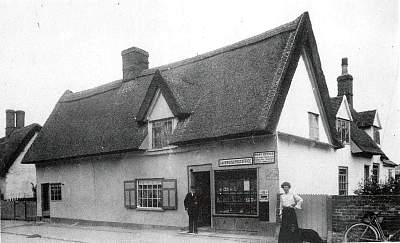
The next little shop up was where the Post Office used to be. Mr. Edmunds kept the Post Office, he also delivered the letters himself. There were 2 other postmen in the village at the time. One of then walked down to Pentlow & all over - from Cavendish Mill up one hill and down the other one to Pentlow Mill Then Mr. Tatum, he did the other delivery all to the outlying farms, he walked miles, poor old boy, every morning. Some people had newspapers delivered, so he had to go round every morning with then.
Nearly opposite to the policeman's house was a little shop where they used to sell sweets Up a little higher was Mr. Crease's bake house, they used to deliver bread in the village they also had a busy little general shop, and they used to make a lot of cakes, iced ones at Christmas time,
Next-door was another Wheelwrights, old Smith's, he used to do blacksmith's work as well. Then a little further up was Mr, Brockwell's builder's yard. The building he used as a builder's shed had previously, been used as a Skittle shed, because his house was built on the site of a pub - I think it was celled the "White Horse'.
Next-door to him was Mr. Thompson the harness, makert he was also an insurance agent, a man worked for him, and next-door to that was the "Bull", another busy pub where they used to brew their own beer.
Up a little higher we come to the present newsagents, that was a Watchmaker's. shop, Mr, Carter's. We used to worry the poor old man. He used to sit with a little thing in his eye so he could peer in those watches, & we used to stand outside & keep tapping the rail round his window, he used to get really cross.
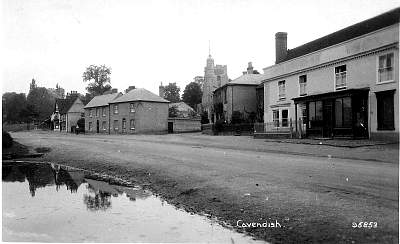
Opposite the pond we come to Mr. Clark, the big grocer's shop. Nearly next-door was the Maltings which was always busy with 5 or 6 men working from 7am to 7pm. We used to take our bacon & hams over to hang in the Maltings to get dry.
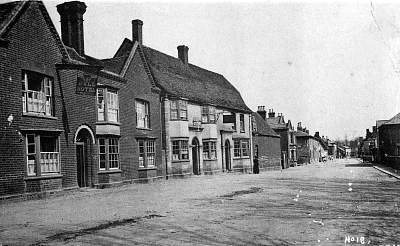
Further on was the 'George' the hotel run by Mr. Deaths who also used to brew his own beer. Hext door to this was what used to be the garage, but in my young days was a Butcher's with a slaughter house.
Then we come up the road to the Rectory. That was where Canon Barnard lived, he was the Reverend Barnard in ay young days. He was the parson for a long while.
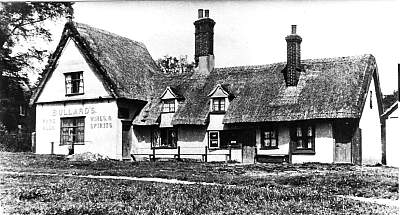
On the Green was the "Five Bells", it used to be a little thatched pub in those. days.
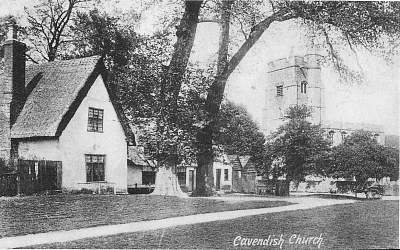
It was pulled down and a new house built, but they still thatched it.
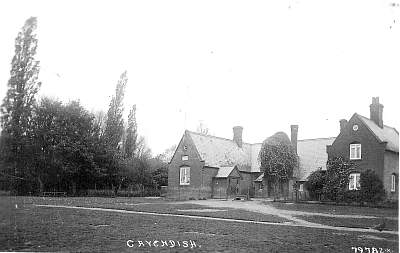
On the top of the Green was the Church School. When I went there, there were about 110 children. There were also about 30 going to the Chapel School down the street -
Village life was built around the farms, there were so many men employed to what there are nowadays, that the whole village was centred round each farm. In those days most farms employed about 3 men to 100 acres; a stockman because they had a lot of horses. Nowadays there's about 1 man to 300 acres, so actually there's only 1 man working where there were 9 previously.
Starting at the Clare end coming into Cavendish, just over the Clare border towards Cavendish on the left hand side is a long drive up there about a mile is the farm called Houghton Hall. Its quite a large farm, I imagine between 400 & 500 acres. The land mostly joins Clare & Poslingford. In my young days there were 5 or 6 cottages up there & they housed most of the employees at work on the farm, there was also one large cottage where Miss Wise now lives, that was where the foreman lived, Mr. Dickson lived in the farm. The stockman, he was a funny old man, most odd. His father used to teach me at Sunday School & he used to stay on afterwards to blow the organ for the church service & he would walk home & then down again in the evening to blow for the evening service. His son, the stockman, when he got cross with pigs, he shouted terribly & when the wind was in the right direction we could hear him quite plainly down in the village, shouting at the cattle & the pigs.
From Houghton Hall we come back to Scotts Farm, the next farm on the left. Years ago there were a few buildings in front of the Fir Trees, which we called Fir Trees Farm, but they were incorporated into Scotts Farm, because they all belonged to the landlord who owned Cavendish Hall. Scotts Farm was farmed by Mr. Richardson, he kept a little herd of cows, a lot of pigs, & he used to send milk into the village, although in my young days there was very little milk delivered in the village, it had to be collected.
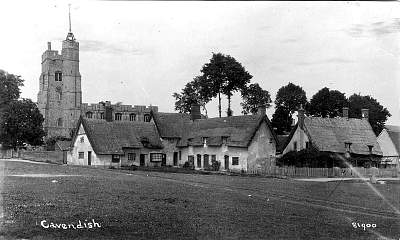
From Scotts Farm we come along to the Green & turn sharp left up by the church.
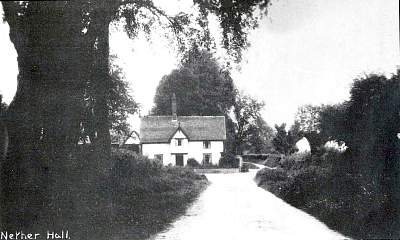
Facing the church is Nether Hall Farm. (Now called Cavendish Manor). I used to go there every morning to get milk for my mother. We tapped on the door, & the farmer's wife came out with the scoop & measured the milk into our jug. Not a very big farm, but they kept 2 or 3 men. Most of the top end of the village had their milk from there. Then we fork left & about 1 1/2 miles up the road there is what used to called Ark Farm, which is now pulled down completely. There used to be 2 cottages & farm buildings, which belonged to the Council & they were let as smallholdings. Ark Farm was about 60 acres. Mr, Starling used to be there, an odd chap, he liked his beer.
Further on we come up to Colts Hall, a large farm of about 500 acres. Its land joins Poslingford. There were 3 cottages up there, where some of the employees lived, but the rest of the workpeople went up everyday from Cavendish on foot or cycle. They kept a lot of stock.
Robbs Farm is next, 1 1/2 miles from Nether Hall along a very poor road. This was about 300 acres, Mr, Bettinson lived in Colts Hall house, but he farmed Robbs Farm. The actual owner of Colts Hall lived at Clare. There was a footpath from Colts Hall to Robbs, Colts Hall was not one of the best farms in the village, 1 or 2 of the big fields had gone completely wild, overgrown with bushes. We used to walk there Sunday afternoon with our dogs, & try to catch a rabbit.
From Robbs we go to Wales Farm, this used to be kept by Mr. Ambrose, whose son now lives at Nether Hall, or rather his grandson. About 250 acres. Further on was Wales End Farm That is pulled right down, & its all in with Wales Farm. At the end of the woods was a sharp left turn down to the Moors, That's another little farm, which is 2 1/2 miles from the village. A little boy used to walk down to school every morning, all weathers.
Left by the Old Chapel we turn to Blacklands Farm - this was the farm of Cavendish. When I was a lad 22 or 23 men worked there. It was owned by Mr. Goodchild from Wratting. Mr. Death was the foreman. Each week he used to bring the wages cheque to my father to turn to cash. The wages for all those men came to about £28 a week. About 1/2 as much as the average wage of one man now. At Blacklands there was 1/2 a gamekeeper, a shepherd, a thatcher, 4 horsekeepers, a man & a boy looking after the stock. They kept over 20 horses, plenty work for the blacksmiths.
From there we go up the Glemsford read to the left leads to Ducks Hall & Kimson (that was a little farm in the fields now part of Ducks Hall). Ducks Hall was derelict when I was a boy. An old man named Smith & his son lived there & they only farmed about half of it. They used to have pigs killed for themselves, we used to kill them at the shop for them - they were enormous, the biggest ones I ever saw in my life. We've had pigs weigh 520 pounds. Nowadays an average pig killed weighs about 100 pounds. They used to salt the whole sides on the floor, they did not cut them up till they had cured them, by putting layers of salt on the floor, then the side of pork, & they lay there about 2 months.